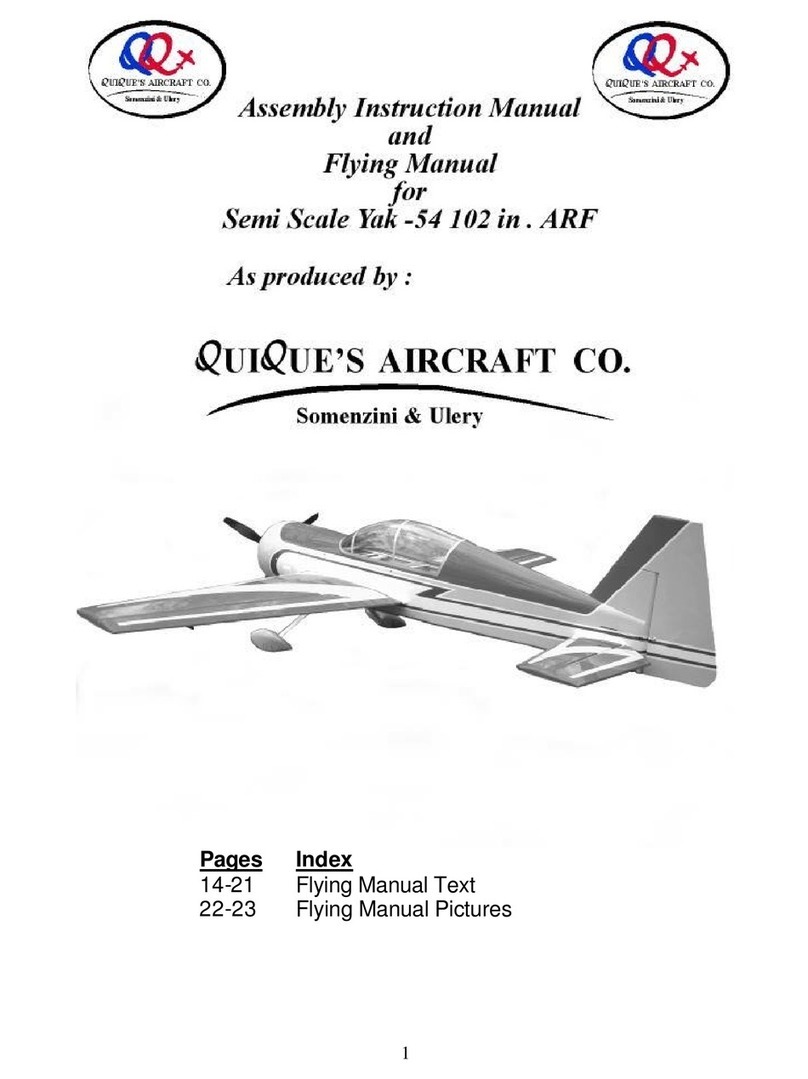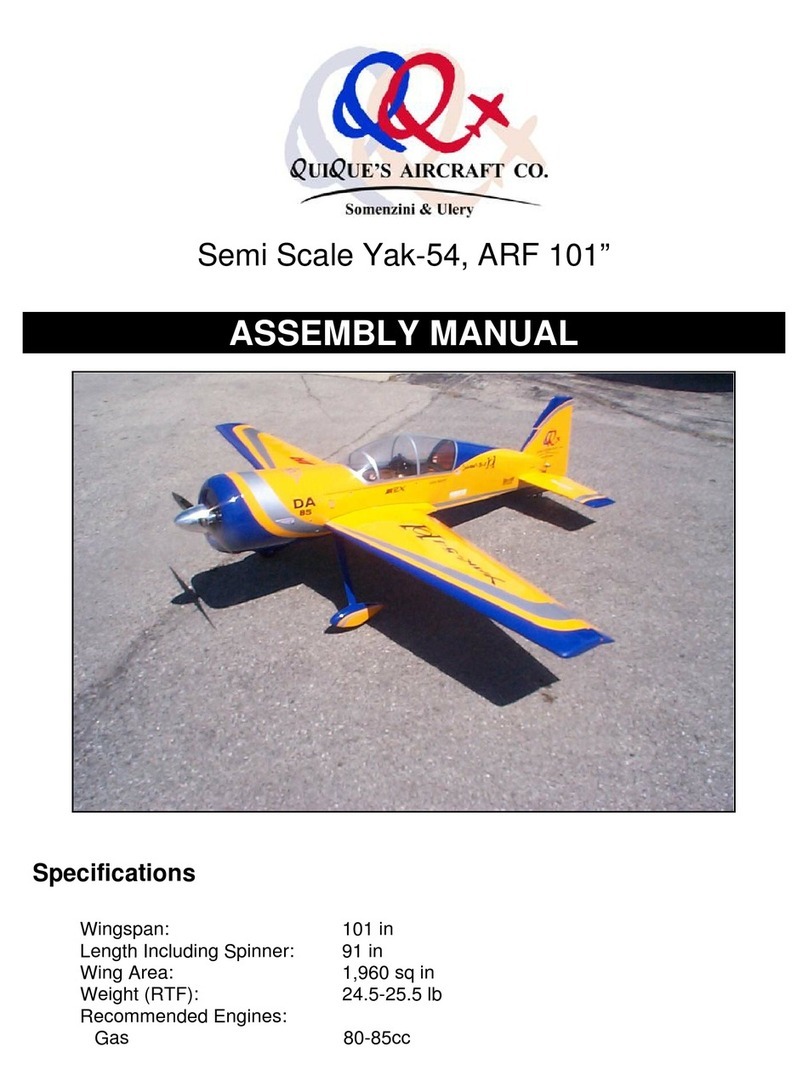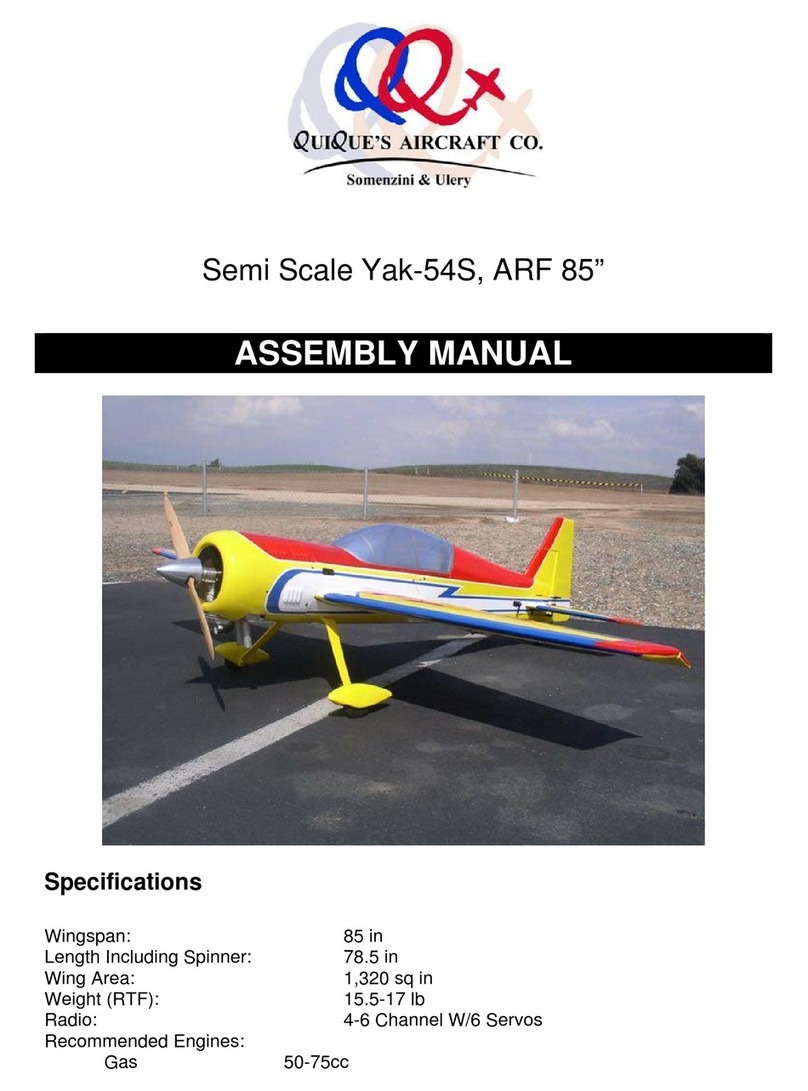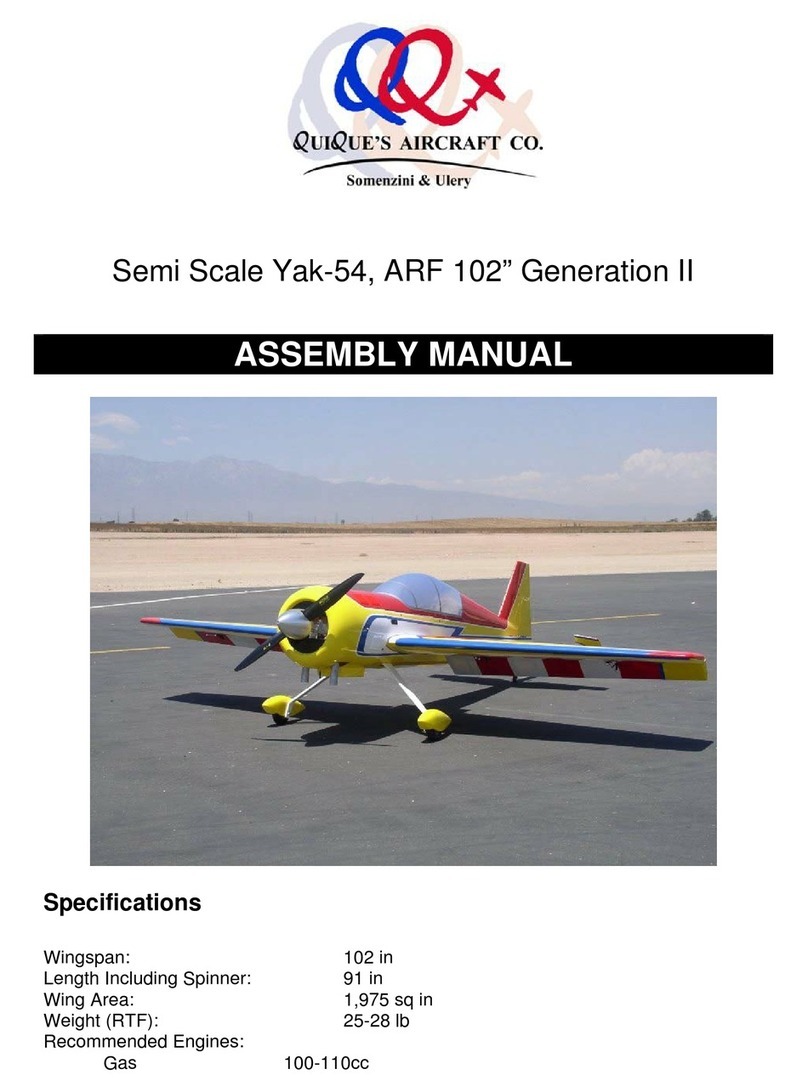
Step 5
Use a new # 11 blade and gently cut
through the ultra cote. See Figure 5.
There are two layers, cut through the
top layer first and remove it. You
have probably cut through the
second layer. If not you may cut
through the second layer. Be very
careful not to cut into the balsa
sheeting as this will weaken the
structure of the Horizontal Stab as
the skin sheeting is important to its
structural integrity.
Figure 5
Step 6
Use your iron to seal down the Ultra-
cote where you removed the center
section before you make the final
attachment.
Step 7
Re-insert the H. Stab into the
fuselage. IMPORTANT: Check the
measurements again, see Figure 3 &
Figure 4 to make sure the H. Stab is
square. Before you make the final
attachment of the H. stab to the fuse,
you must check to see that the H.
stab is parallel with the wing.
To do this, you may sight down the
fuselage from the rear.
See Figure 6. Make sure you are
looking straight down the middle of
the fuse.
Figure 6
Step 8
Sight both sides of the H. stab and
compare with both sides of the wing.
If one side is lower and the other
higher, you will need to shim so both
the H. stab and the wing halves are
parallel. Our prototype needed a little
adjustment. We used a round
toothpick to wedge the one side
down a little. It was not enough so
we used another round tooth pick on
the other side of the fuse on the
opposite side to bring the H. stab
parallel with the wing. See Figure 7.
It should not take much shimming to
get it perfect. It is almost impossible
for our OEM to assemble this fuse so
that the H. stab and wing are always
parallel. You can see that the little
wedges with the round toothpicks
can correct this small problem with
very little adjustment. Now you are
ready to glue in place.
10































